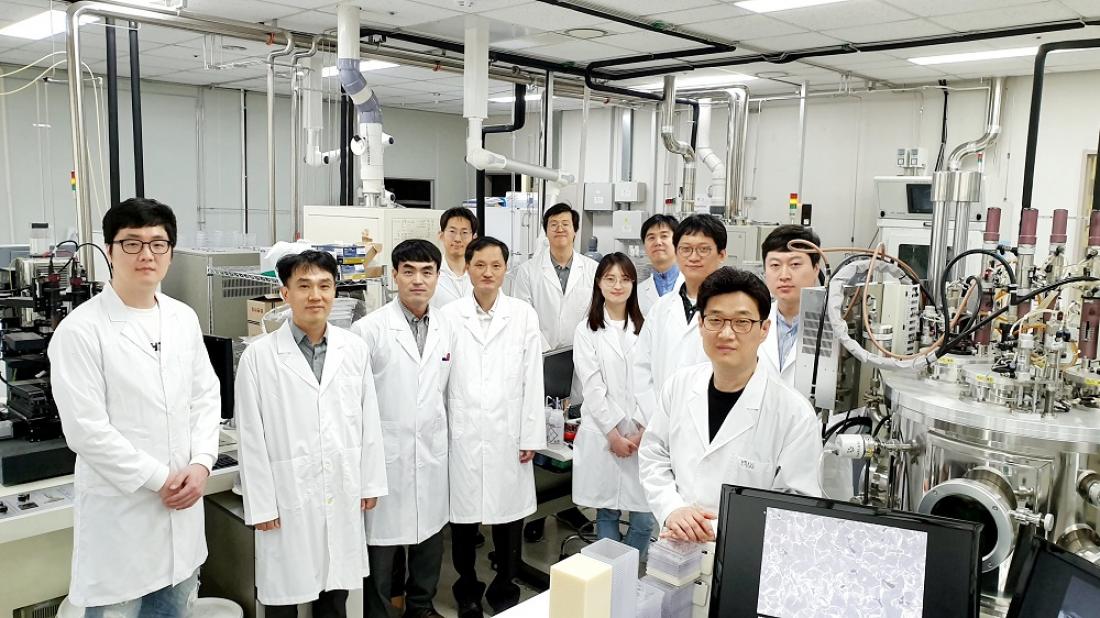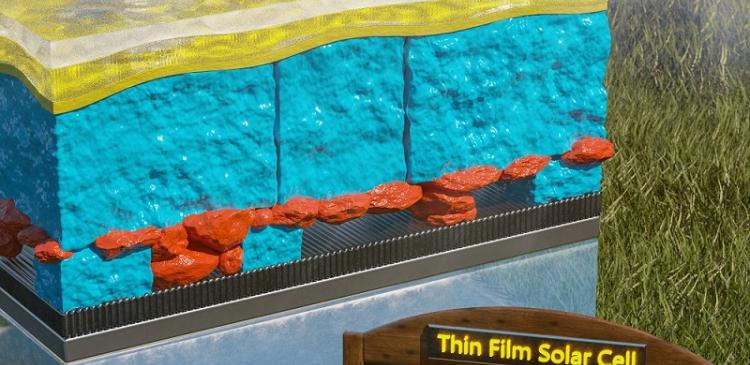Director Dae-Hwan Kim at the DGIST Convergence Research Center for Solar Energy (second from left) and his research team
DGIST announced the achievement in the confirmed highest efficiency of CZTSSe thin film solar cell photoconversion in the world. This research is expected to lead solar power technology in the future and contribute greatly to the development of next generation thin film solar cell industry.
DGIST Convergence Research Center for Solar Energy (Director Dae-Hwan Kim) announced on Wednesday, May 22nd that its thin film solar cell achieved 11.3% of photoconversion efficiency with area above 1cm2, an official minimum required cell area for confirmed single-junction cell, which is higher than the previous record of 10.0% by the University of New South Wales (UNSW) in Australia. In addition, the other DGIST’s new result equals the previous record, 12.6% by IBM in the U.S., for a small area CZTSSe cell.
CZTSSe thin film solar cell uses CZTSSe compound consisting of Cu, Zn, Sn, Se, and S atoms as a photo-absorption layer and uses low cost, ecofriendly elements unlike CIGS thin film solar cell that uses expensive In and Ga, Perovskite that uses toxic lead, and CdTe thin film solar cell that uses toxic cadmium.
Director Dae-Hwan Kim at the DGIST Convergence Research Center for Solar Energy said “The technologies developed by our center have been recognized internationally by achieving 2 official records for CZTSSe thin film solar cells in the future technology for low-price solar cell. By continuously conducting research, we will lead the future solar power technology and further contribute to the development of thin film solar cell industry.”
For more information, contact:
Dae-Hwan Kim, Director
Convergence Research Center for Solar Energy
Daegu Gyeongbuk Institute of Science and Technology (DGIST)
E-mail: [email protected]





